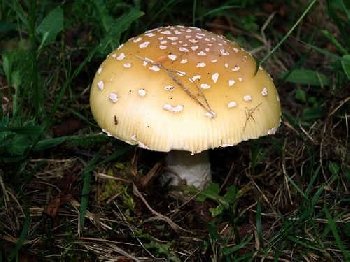Amanita rubescens (Amanita rubescens)
- Nkeji: Basidiomycota (Basidiomycetes)
- Nkebi: Agaricomycotina (Agaricomycetes)
- Klas: Agaricomycetes (Agaricomycetes)
- Klas: Agaricomycetidae (Agaricomycetes)
- Order: Agaricles (Agaric ma ọ bụ Lamellar)
- Ezinụlọ: Amanitaceae (Amanitaceae)
- Genus: Amanita (Amanita)
- ụdị: Amanita rubescens (Pearl amanita)

Nwere: The cap is up to 10 cm in diameter. Young mushrooms have a convex shape, almost yellow-brown in color. Then the cap darkens and becomes a dirty brown color with a hint of red. The skin of the cap is glossy, smooth, with small granular scales.
Ihe ndekọ: free, white.
Spore ntụ ntụ: ọcha.
Ụkwụ: the height of the leg is 6-15 cm. The diameter is up to three cm. At the base, the leg thickens, the same color as the cap or slightly lighter. The surface of the leg is velvety, matte. Girdle folds are visible in the lower part of the leg. In the upper part of the leg there is a conspicuous white leathery ring with hanging grooves.
Pulp: white, on the cut slowly turns red. The taste of the pulp is soft, the smell is pleasant.
Kesaa: There is a fly agaric pearl quite often. This is one of the most unpretentious types of mushrooms. It grows on any soil, in any forest. It occurs in summer and grows until late autumn.
Nri: Amanita pearl (Amanita rubescens) is a conditionally edible mushroom. Raw is not used, it must be thoroughly fried. It is not suitable for drying, but it can be salted, frozen or pickled.
Myirịta: One of the poisonous twins of the pearl fly agaric is the panther fly agaric, which never blushes and has a smooth ring, covered with folds of the cap edge. Also similar to the pearl fly agaric is the stocky fly agaric, but its flesh does not turn red and it has a darker grayish-brown color. The main distinguishing features of the pearl fly agaric is that the mushroom turns completely red, free plates and a ring on the leg.









